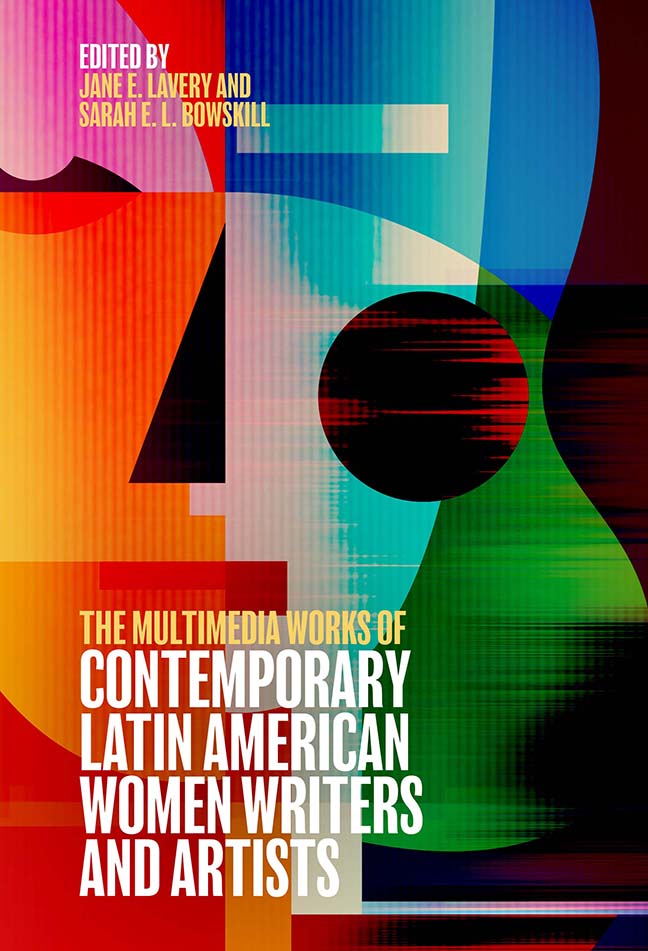Book contents
- Frontmatter
- Contents
- List of Illustrations
- List of Contributors
- Acknowledgments
- Introduction: A Crosscurrent of Contemporary Latin American Women Multimedia Writers and Artists
- 1 The Transliterary: The Novel and Other Multimedia Horizons Beyond (and Close to) the Textual
- 2 Commentary on Fe/males: Sieges of the Post Human (Transmedia Installation)
- 3 An Anthropophagic Ch’ixi Poetics
- 4 My Relationship with Artistic Creation Began with Words
- 5 Imagetext
- 6 Voices/Bodies
- 7 Redefining Meaning: The Interweaving of the Visual and Poetic
- 8 The Territory Is Home
- 9 Reflections on a Multimedia Practice
- 10 Digital Weaving
- 11 Eli Neira, Regina José Galindo, and Ana Clavel: “Polluting” Corporealities and Intermedial/Transliterary Crossings
- 12 The Digital Condition: Subjectivity and Aesthetics in “Fe/males” by Eugenia Prado Bassi
- 13 The Transmedia, Post-Medium, Postnational, and Nomadic Projects of Pilar Acevedo, Rocío Cerón, and Mónica Nepote
- 14 The Art of the Hack: Poets Carla Faesler and Mónica Nepote and Booktuber Fátima Orozco
- 15 The Places of Pain: Intermedial Mode and Meaning in Via Corporis by Pura López Colomé and Geografía del dolor by Mónica González
- 16 Words, Memory, and Space in Intermedial Works by Gabriela Golder and Mariela Yeregui
- 17 Fungibility and the Intermedial Poem: Ana María Uribe, Belén Gache, and Karen Villeda
- 18 Hypertext and Biculturality in Two Autobiographical Hypermedia Works by Latina Artists Lucia Grossberger Morales and Jacalyn Lopez Garcia
- 19 Dialogues Across Media: The Creation of (New?) Hybrid Genres by Belén Gache and Marina Zerbarini
- Bibliography
- Index
- Tamesis
7 - Redefining Meaning: The Interweaving of the Visual and Poetic
Published online by Cambridge University Press: 17 December 2023
- Frontmatter
- Contents
- List of Illustrations
- List of Contributors
- Acknowledgments
- Introduction: A Crosscurrent of Contemporary Latin American Women Multimedia Writers and Artists
- 1 The Transliterary: The Novel and Other Multimedia Horizons Beyond (and Close to) the Textual
- 2 Commentary on Fe/males: Sieges of the Post Human (Transmedia Installation)
- 3 An Anthropophagic Ch’ixi Poetics
- 4 My Relationship with Artistic Creation Began with Words
- 5 Imagetext
- 6 Voices/Bodies
- 7 Redefining Meaning: The Interweaving of the Visual and Poetic
- 8 The Territory Is Home
- 9 Reflections on a Multimedia Practice
- 10 Digital Weaving
- 11 Eli Neira, Regina José Galindo, and Ana Clavel: “Polluting” Corporealities and Intermedial/Transliterary Crossings
- 12 The Digital Condition: Subjectivity and Aesthetics in “Fe/males” by Eugenia Prado Bassi
- 13 The Transmedia, Post-Medium, Postnational, and Nomadic Projects of Pilar Acevedo, Rocío Cerón, and Mónica Nepote
- 14 The Art of the Hack: Poets Carla Faesler and Mónica Nepote and Booktuber Fátima Orozco
- 15 The Places of Pain: Intermedial Mode and Meaning in Via Corporis by Pura López Colomé and Geografía del dolor by Mónica González
- 16 Words, Memory, and Space in Intermedial Works by Gabriela Golder and Mariela Yeregui
- 17 Fungibility and the Intermedial Poem: Ana María Uribe, Belén Gache, and Karen Villeda
- 18 Hypertext and Biculturality in Two Autobiographical Hypermedia Works by Latina Artists Lucia Grossberger Morales and Jacalyn Lopez Garcia
- 19 Dialogues Across Media: The Creation of (New?) Hybrid Genres by Belén Gache and Marina Zerbarini
- Bibliography
- Index
- Tamesis
Summary
I am a visual artist who creates multimedia work mostly consisting of assemblage, collage, oil painting, and poetry in order to give form, voice, and witness to those whose pain has previously been suffocatingly entombed. My themes involve child sexual abuse and domestic violence, and I explore them through transmedia storytelling inspired by childhood memories, thoughts and perceptions, vintage photographs, and objects, unsettling human interactions, and literature. I interweave visual and written art and often use found objects whose meanings I redefine. Although my work recurrently tells stories of trauma, my intention is not to be shocking or harsh; it is simply to engage viewers and help them understand that which needs to be “heard.” In this way, I take that which was hidden in darkness and reshape it into that which calls out to be seen.
Childhood memories are frequently key elements of my work and are most evident in my collages and assemblages, predominantly through the use of found objects such as drawers, viewers, and boxes, which I typically find in antique shops. I also employ personal nostalgic items and old family photos from my life and that of my parents during our time in Mexico City. My collages and assemblages are created using paper, poetry, and sometimes sound in an effort to draw the audience into a multisensory interaction that provokes thought, emotion, and perhaps action. The work on canvas and paper conveys “memory as layers” through the use of multiple glazes and the overlapping of paper and images.
Because collage lends itself to the fantastical, I work in this medium to produce fantasy-like narratives. By allowing my imagination to run freely, I am able to weave together a visual story – merging characters from vintage photographs and old Western civilization books with organic images from biology and botany textbooks. As with the found objects I use in my assemblages, vintage photographs, and images from old textbooks are removed from their original context, placed in a different context and thereby redefined or recycled to tell a distinct story. In this process, the newly defined visual narrative comes first, and then the written narrative evolves. Such was the case with my oil painting, Spider Princess (Fig. 18):
As a result of a magic spell cast by the Gray Witch, the Spider Princess sprouted from a flower – part spider and part human.
- Type
- Chapter
- Information
- Publisher: Boydell & BrewerPrint publication year: 2023

